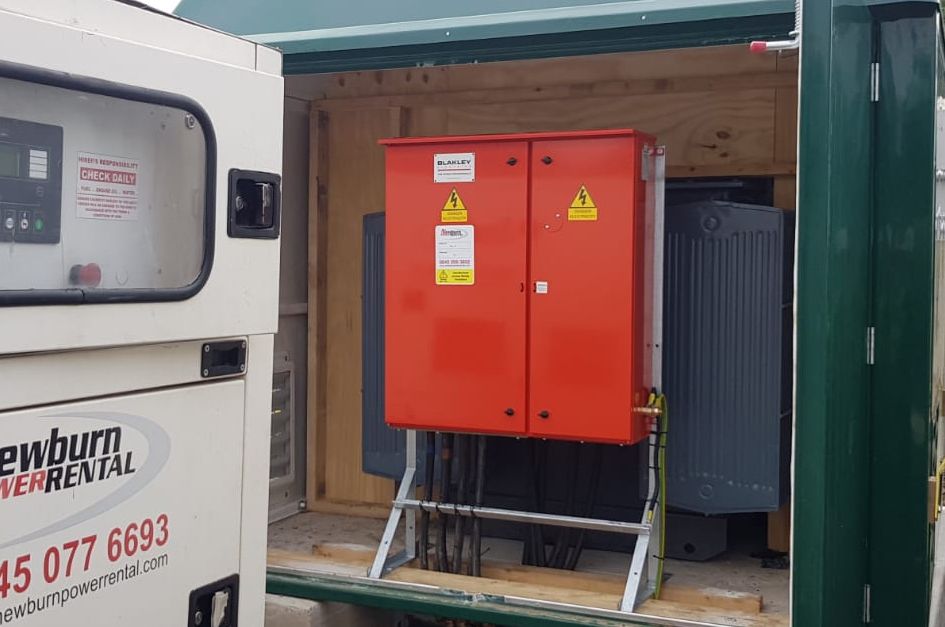
Construction with care for the environment: a busy quarter for Newburn’s Temporary Electrics Division
The last quarter has seen Newburn being awarded significant contracts in the construction sector, with a major project for one of the UK’s largest universities. As part of the company’s ethos, and as with all such projects, Newburn have safety and environmental concerns at the forefront.
A £29.5 million development of new student accommodation, the three blocks scheduled for the University project will provide rooms for 491 students, across blocks of 16, 11 and 6 storeys high. As a 100-week construction programme, Newburn have supplied the temporary electrics to the main contractor, including 800 AMF (Automatic Mains Failure) LV panels, fed from high voltage transformers. The AMF panels supplied by Newburn are designed to changeover automatically from permanent mains to stand-by generators when the mains supply fails, with a pre-set time delay to allow the generator sufficient time to run-up before taking the load, with enclosures providing protection up to IP54. When the mains supply in restored, the system only changes back to mains after a further pre-set time, with the option to continue with power running from the generator.
As with all projects such as this – involving construction at height – safety is of paramount importance, while developers are always keen minimise emissions and lower the environmental impact of the build. Crane warning lights are a legal requirement on a significant proportion of sites at this scale, and Article 219 of the UK Air Navigation Order requires lighting on structures of 150 metres or more, while structures of a lower height may also need aviation obstruction lighting if, due to their location or nature, they are considered a significant hazard. Red warning lights must be mounted as close as possible to the top of the structure at intermittent levels not exceeding 52 metres and are required to be displayed from half an hour after sunset until half an hour before sunrise. For crane height of less than 150 metres, given the likelihood that such cranes will be amongst the tallest structures in a location, the Civil Aviation Authority recommends crane operators use aviation lighting to fulfil their duty of care towards others. To help clients meet their safety obligations, Newburn have developed a set-up that offers zero emissions, while providing all the necessary lighting required or recommended by the CAA. Kieran Brown, temporary electrical manager at Newburn, explains,
“The lighting is powered by a generator, which works with a 5KVA invertor. This means the battery is charged during the day, as part of normal ongoing power supply to the construction site, while the aviation warning lights then function when needed, powered through the invertor. Our clients fulfil their safety requirements, with zero emissions – an appealing proposition for all considerate constructors.”
